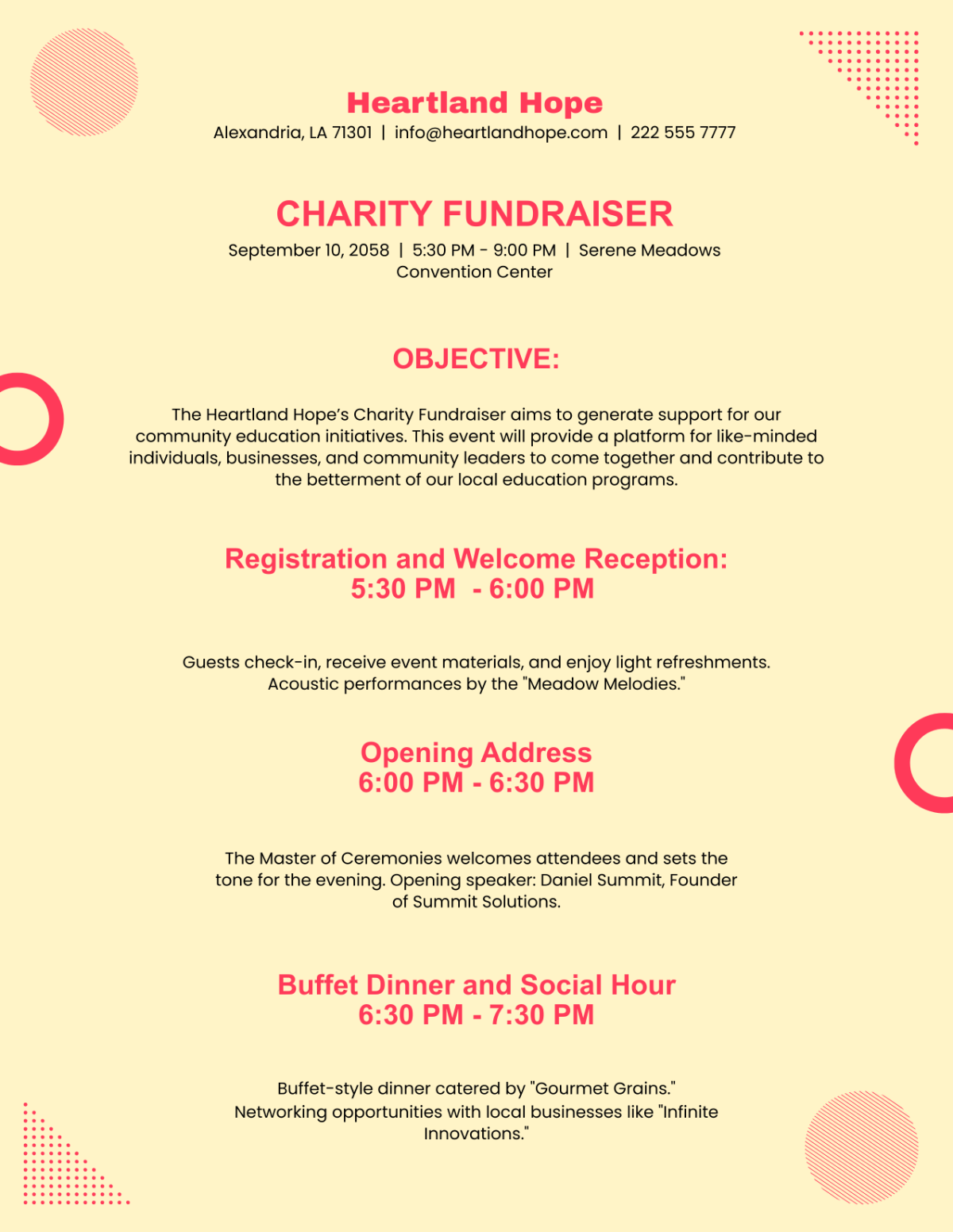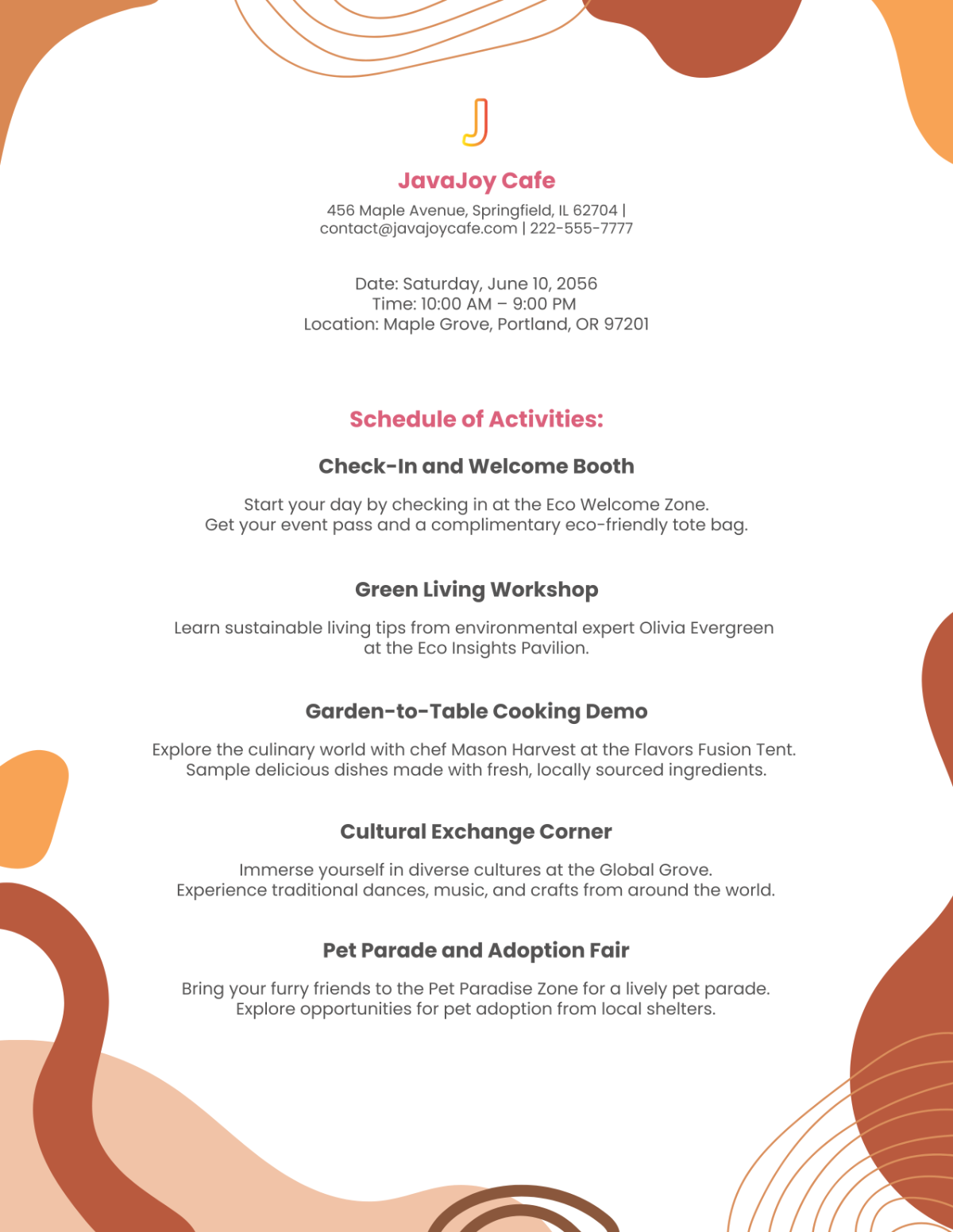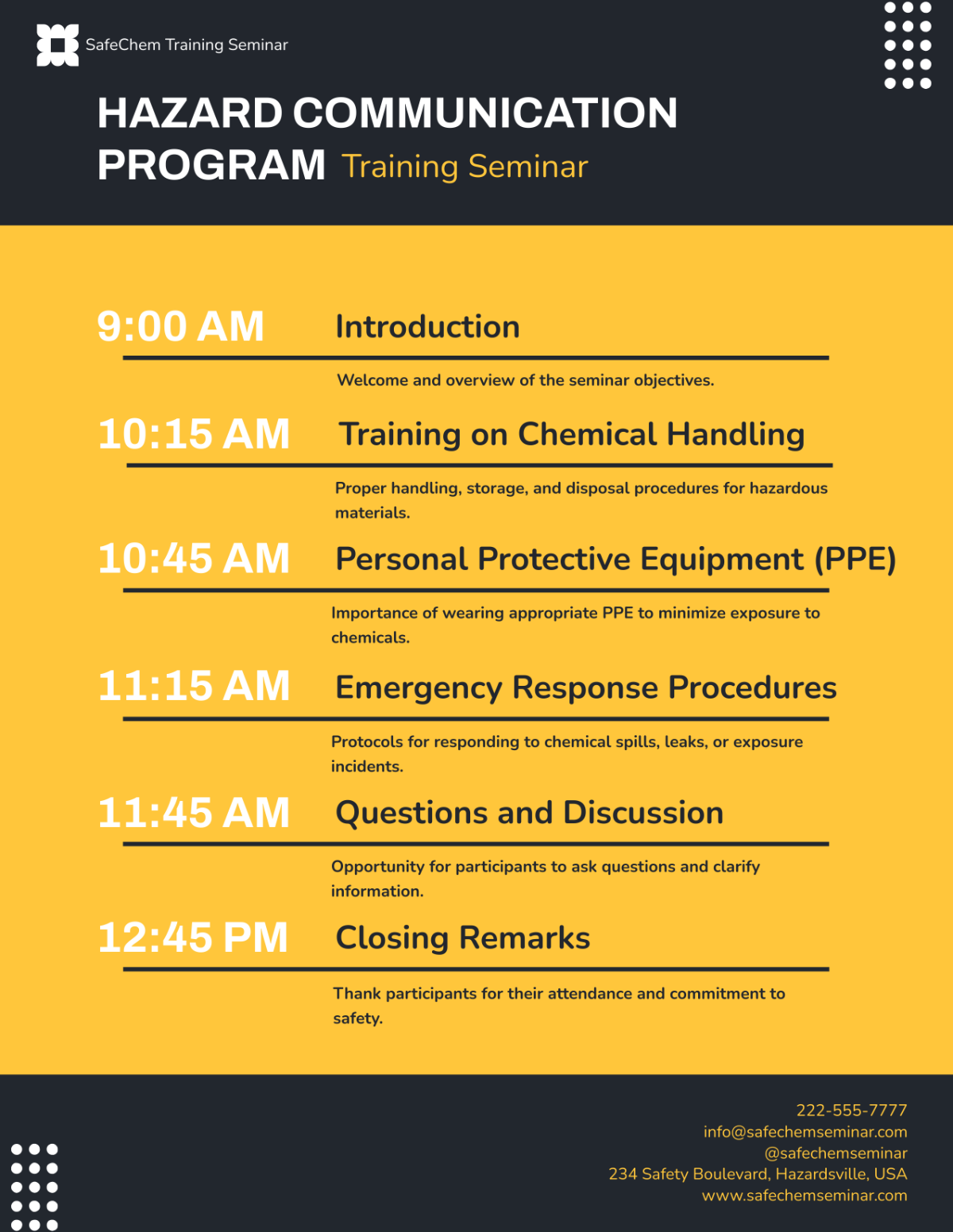Inclusion Champions and Allies Program HR
Section 1: Introduction
[Your Company Name] has designed the Inclusion Champions and Allies Program to promote a culture of diversity, equity, and inclusion (DEI) within our organization. This program recognizes the importance of fostering an inclusive workplace where all employees feel valued, respected, and empowered to contribute their unique perspectives and talents.
1.1 Purpose
The Inclusion Champions and Allies Program is designed as a cornerstone initiative of [Your Company Name]'s commitment to cultivating a workplace environment where diversity, equity, and inclusion are not just valued but are integral to our operational ethos. The purpose of this program is multifold:
To Educate: | Empower employees with the knowledge and skills to appreciate and celebrate diversity within the workforce. |
To Advocate: | Create a network of champions and allies who actively promote an inclusive culture and advocate for policies and practices that support DEI. |
To Engage: | Encourage every member of our organization to participate in DEI initiatives, contributing to a culture that embraces differences and fosters a sense of belonging. |
To Transform: | Drive meaningful change within our organizational structures, policies, and practices to ensure they reflect our DEI values. |
By addressing these aims, the program seeks to build a foundation for sustainable growth and innovation, foster a sense of community, and enhance the overall workplace experience for all employees.
1.2 Scope
The scope of the Inclusion Champions and Allies Program is comprehensive and ambitious, designed to weave DEI principles into the very fabric of [Your Company Name]'s culture. It includes:
Universal Participation: Engaging employees at every level, from executive leadership to entry-level positions, ensuring DEI principles are embodied across all departments and functions.
Policy Integration: Reviewing and revising existing policies and practices to align with DEI objectives, ensuring that our commitment is reflected in every aspect of the organization's operations.
Continuous Learning: Implementing ongoing DEI training and development opportunities to build awareness, understanding, and skills among all staff members.
Feedback Mechanisms: Establishing channels for open and honest communication, allowing for the continuous collection of feedback on the program's effectiveness and areas for improvement.
This comprehensive approach ensures that DEI is not seen as an isolated initiative but as a fundamental aspect of how we operate and evolve as an organization.
1.3 Commitment to Inclusion
[Your Company Name]'s commitment to inclusion is both a moral imperative and a strategic advantage. It is rooted in the understanding that diverse perspectives and inclusive practices are critical drivers of innovation, performance, and employee satisfaction. This commitment is reflected through:
A Culture of Belonging: Creating an environment where every employee feels seen, heard, and valued for their unique contributions.
Innovative Solutions: Leveraging the diverse backgrounds and perspectives of our workforce to fuel creativity and innovation.
Enhanced Collaboration: Fostering a collaborative atmosphere where diversity of thought is encouraged and valued, leading to better decision-making and problem-solving.
Employee Well-being: Recognizing that an inclusive workplace contributes to the overall well-being of our employees, leading to higher levels of engagement and productivity.
Through these efforts, [Your Company Name] aims to not only enhance its competitive edge but also contribute to a more equitable and inclusive society.
1.4 Program Launch
The program will officially launch on [Month, Day, Year], and we will provide ongoing support and resources to all participants to ensure its success.
Section 2: Program Objectives
The primary objectives of the Inclusion Champions and Allies Program are:
To create a network of dedicated Inclusion Champions and Allies throughout the organization.
To raise awareness about the importance of diversity and inclusion.
To provide tools and resources for employees to become effective allies.
To support the professional development of Inclusion Champions.
To measure and track progress in creating an inclusive workplace.
2.1: Building Awareness
The objective of this is to ensure that every employee understands the importance of diversity, equity, and inclusion (DEI) in the workplace. This includes awareness-building campaigns, seminars, and workshops that highlight the benefits of a diverse and inclusive workforce.
2.2: Fostering Inclusive Leadership
This aims to develop inclusive leaders who can champion DEI efforts within the organization. It involves leadership training programs that emphasize the role of leaders in promoting inclusivity and equity.
2.3: Empowering Underrepresented Groups
Empowering underrepresented groups is a core objective. This involves creating opportunities, mentorship programs, and support systems to ensure that all employees, regardless of background, can thrive within the organization.
2.4: Tracking and Measuring Progress
This focuses on establishing key performance indicators (KPIs) and metrics to measure progress in achieving DEI objectives. Regular assessments and reporting are essential to ensure accountability and continuous improvement.
2.5: Strengthening Organizational Culture
The goal here is to foster a culture where we have embedded diversity, equity, and inclusion in the organization's values and daily practices. This includes promoting open dialogue, inclusivity in decision-making, and embracing diverse perspectives.
Section 3: Program Structure
3.1: Inclusion Champion Selection Process
This process emphasizes the importance of diverse representation, commitment to DEI, leadership qualities, communication skills, and innovative thinking. It involves a series of steps including an open call for nominations, a thorough review of candidates by a DEI committee, interviews with shortlisted candidates, and the final selection of Champions. These selected individuals will then receive training and support to effectively promote and advance DEI efforts within the organization, ensuring they are equipped to foster an inclusive culture and drive meaningful change.
3.2: Allyship Training Curriculum
Topics Covered | Details |
|---|---|
Understanding DEI: | Fundamental concepts, significance, and the business case for diversity, equity, and inclusion. |
Privilege and Bias: | Exploration of unconscious bias, privilege dynamics, and their impact on the workplace. |
Active Allyship: | Strategies for being an effective ally, including listening, learning, and leveraging privilege to advocate for others. |
Cultural Competency: | Developing skills to understand, communicate with, and effectively interact with people across cultures. |
Conflict Resolution: | Techniques for addressing and resolving DEI-related conflicts in a constructive manner. |
Sustainable DEI Practices: | Building long-term DEI strategies into daily operations and personal interactions. |
Evaluation and Feedback
To assess the impact of the Allyship training curriculum and ensure continuous improvement, participants are encouraged to provide feedback through surveys and evaluations. This feedback is used to refine the curriculum, adjust teaching methods, and identify areas for further development in the organization's DEI efforts.
3.3: Meeting Frequency and Agenda
This section specifies the regularity with which Inclusion Champions will meet, setting a structured schedule to ensure consistent engagement and progress tracking. It outlines a detailed agenda for each meeting that includes sharing success stories to inspire and motivate, addressing current challenges to seek collaborative solutions, and setting actionable goals for continued DEI advancement. The agenda is designed to foster a productive and collaborative environment where champions can exchange ideas, learn from each other's experiences, and collectively drive the organization's DEI efforts forward. By establishing clear expectations for outcomes, the organization aims to make each meeting a stepping stone towards achieving broader DEI goals, ensuring that time spent together is both meaningful and impactful.
3.4: Resource Hub Development
This section explains the process of creating and maintaining an online resource hub dedicated to DEI, highlighting the careful selection of materials that include relevant articles, practical tools, and resources designed to support inclusivity efforts. It details the criteria for choosing these materials, ensuring they are current, evidence-based, and cover a wide range of DEI topics to meet diverse needs. The upkeep of the hub involves regular updates and the addition of new resources to reflect the latest DEI research and best practices, making it a dynamic and valuable tool for the organization. This online hub serves as a centralized source of information and inspiration, empowering employees to deepen their understanding of DEI issues and apply this knowledge in fostering a more inclusive workplace.
Section 4: Responsibilities
4.1: Inclusion Champion's Role
This delineates the specific responsibilities of Inclusion Champions, including their role in mentoring colleagues, leading DEI initiatives, and serving as a primary point of contact for inclusion-related concerns.
4.2: Ally Expectations
Within this section, we articulate the expectations for allies, emphasizing active support for colleagues, participation in Allyship training, and their pivotal role in nurturing an inclusive workplace culture.
4.3: Accountability Mechanisms
In this, we detail the mechanisms in place to hold both Inclusion Champions and allies accountable for their roles, incorporating regular check-ins and feedback loops to ensure continuous improvement.
4.4: Reporting Inclusion Challenges
Reporting Process
The process for reporting inclusion challenges is designed to be straightforward and accessible to all employees, ensuring they can report incidents without fear of retaliation or breach of privacy. Key elements of the process include:
Multiple Reporting Channels: To accommodate different preferences and situations, multiple channels are available for reporting, such as a dedicated online portal, email, direct communication with a DEI officer, or through HR. Anonymous reporting options should also be provided to ensure employees feel secure.
Clear Instructions: Detailed guidelines on how to report instances of exclusion, bias, or discrimination, including what information to provide and who to contact, are made available to all employees.
Immediate Acknowledgment: Once a report is submitted, the employee receives immediate acknowledgment of receipt, ensuring them that their concern is being taken seriously.
Section 5: Training and Development
5.1: Inclusion Champion Training Content
The training content for Inclusion Champions is structured around three core areas: DEI strategies, leadership skills, and conflict-resolution techniques. Each area is critical for empowering Champions to effectively advocate for and implement DEI principles.
DEI Strategies
Understanding DEI: Introduction to the core concepts of diversity, equity, and inclusion, including the importance of each in the workplace.
Best Practices in DEI: Exploration of successful DEI strategies and programs implemented by other organizations, providing models for adaptation and implementation.
DEI Policy Development: Guidance on developing, implementing, and evaluating effective DEI policies within the organization.
Leadership Skills
Influential Leadership: Techniques for leading by example and inspiring others to commit to DEI efforts.
Effective Communication: Strategies for communicating DEI concepts clearly and persuasively across different levels of the organization.
Building DEI Teams: Insights into assembling and motivating teams to champion DEI initiatives.
Conflict-Resolution Techniques
Identifying and Addressing Bias: Tools for recognizing unconscious bias and discrimination, and strategies for addressing them constructively.
Mediation Skills: Techniques for mediating conflicts that may arise from DEI issues, ensuring respectful and productive resolution.
Creating Safe Spaces: Methods for fostering an environment where employees feel safe to express concerns and discuss DEI challenges.
5.2: Allyship Training Access
This section addresses how the organization ensures easy access to Allyship training for all employees, emphasizing the importance of making such training available and inclusive. It explains the multiple formats in which training is offered, including in-person sessions for interactive learning and online modules for flexibility and scalability. This hybrid approach allows employees to engage with the training in a way that best suits their learning preferences and schedules, ensuring broad participation. The accessibility of Allyship training is a key component of the organization's commitment to fostering an inclusive culture by equipping employees with the knowledge and skills to support diversity, equity, and inclusion efforts effectively.
5.3: Continuous Learning Opportunities
This underscores the significance of ongoing learning and development in the context of DEI. It provides information on advanced training options and resources tailored to the evolving needs of Inclusion Champions and allies.
5.4: Measuring Training Impact
In this section, the organization outlines its approach to evaluating the effectiveness of Inclusion Champion and Allyship training programs. It details the methods and assessments used to measure the training's impact on participants and the overall organizational environment. This includes pre- and post-training surveys to assess changes in attitudes and behaviors, as well as tracking the implementation of learned practices in the workplace. Additionally, feedback mechanisms are put in place to gather participants' insights on the training experience. This comprehensive evaluation strategy is crucial for understanding the training's effectiveness in enhancing DEI competencies among employees and guiding continuous improvement of the training content and delivery methods.
Section 6: Measurement and Evaluation
Regular assessments and surveys are essential for evaluating the effectiveness of the Inclusion Champions and Allies Program, focusing on its impact on organizational inclusivity. These evaluations will occur periodically to gather employee feedback and measure the program's influence on diversity, equity, and inclusion (DEI) within the workplace. The feedback collected will be used to refine and improve the program, ensuring it meets its objectives and adapts to the evolving needs of the organization. This approach supports continuous DEI progress, engages stakeholders in meaningful dialogue, and helps track the organization's advancement towards a more inclusive culture.
6.1: Key Performance Indicators (KPIs)
This section elaborates on the Key Performance Indicators (KPIs) that monitor our diversity, equity, and inclusion (DEI) initiatives. The KPIs include metrics like workforce diversity ratios, equity in pay, and inclusion in leadership roles. These indicators help us identify progress and areas for improvement in our DEI efforts.
We track these KPIs using a mix of quantitative data (e.g., demographic statistics) and qualitative insights (e.g., employee feedback). This dual approach ensures a comprehensive understanding of our DEI impact. The data is regularly analyzed to discern trends and inform strategy adjustments, ensuring our DEI efforts are effective and aligned with our goals.
Reporting on these KPIs is done transparently to all stakeholders, highlighting our commitment to DEI and fostering a culture of continuous improvement. This process not only keeps stakeholders informed but also supports our goal of creating a more inclusive organization.
6.2: Employee Surveys and Feedback
This section focuses on the use of employee surveys and feedback sessions as key tools for understanding staff experiences and perceptions regarding diversity, equity, and inclusion (DEI) within the organization. These surveys are conducted regularly and are designed to capture honest feedback on DEI-related matters, including workplace culture, policies, and everyday interactions.
The feedback obtained is crucial for gauging the effectiveness of current DEI initiatives and identifying areas needing improvement. By analyzing this feedback, the organization can make informed decisions about program adjustments and enhancements. This process ensures that DEI efforts are responsive to the actual needs and experiences of employees, thereby fostering a more inclusive and equitable workplace environment.
6.3: Data Collection and Analysis
This section outlines the approach to collecting and analyzing data to measure progress in diversity and inclusion. It highlights the integration of both quantitative and qualitative data, ensuring a comprehensive understanding of the organization's DEI landscape.
Data Collection and Analysis Methods
Method | Description |
|---|---|
Quantitative Data | Includes demographic statistics, diversity ratios, and other numerical indicators of DEI progress. This data is gathered through HR records, surveys, and other standardized tools. |
Qualitative Data | Obtained through employee interviews, focus groups, and open-ended survey questions. This type of data provides context and insights into the experiences, perceptions, and suggestions of employees regarding DEI efforts. |
Analysis Tools and Techniques
Statistical Software: Used for analyzing quantitative data, identifying trends, and making comparisons over time.
Content Analysis: Applied to qualitative data to identify themes, patterns, and narratives that offer deeper insights into the DEI climate.
6.4: Benchmarking and External Comparisons
This section delves into the strategy of benchmarking the organization's diversity, equity, and inclusion (DEI) efforts against recognized industry standards and conducting external comparisons with peer organizations. By engaging in this practice, the organization aims to identify both areas of improvement and areas where it excels in DEI practices. This approach allows for a comprehensive understanding of the organization's DEI positioning in the broader industry context, highlighting opportunities for enhancement and innovation. Benchmarking serves as a critical tool for continuous DEI improvement, ensuring that the organization not only meets but strives to exceed industry norms and expectations in fostering an inclusive and equitable workplace.
Section 7: Recognition and Rewards
Outstanding Inclusion Champions and Allies will be recognized and rewarded for their contributions to fostering an inclusive workplace.
7.1: Recognition Criteria
These criteria are designed to identify individuals and teams who have demonstrated exceptional contributions towards creating a more inclusive workplace. The benchmarks focus on measurable achievements in promoting diversity, equity, and inclusion, such as the implementation of innovative DEI initiatives, positive impacts on workplace culture, and efforts to enhance inclusivity across the organization. By establishing clear and transparent criteria for recognition, the organization ensures that those who are making significant strides in DEI efforts are duly acknowledged and celebrated, thereby encouraging continued commitment and action towards an inclusive work environment.
7.2: Reward Structure
This outlines the structure of rewards and recognition, including monetary incentives, awards, public acknowledgments, and career development opportunities for program participants.
7.3: Celebrating Success Stories
This section emphasizes the importance of recognizing and sharing success stories and best practices in diversity, equity, and inclusion (DEI) within the organization. It details how the organization identifies and celebrates the achievements of individuals and teams who have made significant contributions to DEI efforts.
Key Points:
Identification of Successes: Success stories are identified through nominations, direct observations, and reviews of DEI initiatives.
Sharing Mechanisms: These stories are shared across the organization through internal newsletters, meetings, and the company intranet, serving as inspiration and models for best practices in DEI.
Impact Recognition: The process not only acknowledges the hard work and positive impact of the highlighted individuals and teams but also reinforces the organization's commitment to DEI by showcasing tangible examples of progress.
Section 8: Reporting and Accountability
The HR department will oversee the program's implementation and effectiveness, reporting regularly to senior management on its progress and any necessary adjustments.
8.1: HR Oversight
This details the role of the HR department in overseeing the program's implementation, monitoring progress, and ensuring alignment with the organization's overall DEI strategy.
8.2: Leadership Engagement
This section outlines the critical role of senior leadership in driving and supporting diversity, equity, and inclusion (DEI) initiatives within the organization. It highlights the leaders' commitment to DEI, not just in words but through actionable support and involvement.
Key Aspects | Details |
|---|---|
Active Support: | Leaders demonstrate their support for DEI initiatives by actively participating in related programs, discussions, and training sessions. |
Fostering Accountability: | They play a crucial role in ensuring accountability across all levels of the organization by setting clear DEI goals and metrics, and by holding teams responsible for achieving them. |
Visibility and Communication: | Leadership communicates the importance of DEI through regular updates, showcasing their engagement and setting a tone that prioritizes and values DEI efforts. |
8.3: Program Transparency
This section emphasizes the significance of maintaining transparency in communicating the progress and impact of DEI initiatives to all employees. It highlights how open reporting on program updates and achievements fosters a culture of trust and inclusion, ensuring that every member of the organization is well-informed and engaged with the DEI journey. By prioritizing transparency, the organization commits to a policy of openness and accountability, allowing employees to see firsthand the tangible outcomes of DEI efforts and how their contributions are making a difference, thus reinforcing the collective commitment to fostering an inclusive workplace.
Section 9: Communication
We will use regular communication through company-wide emails, newsletters, and internal social platforms to keep informing all of our employees about program updates and achievements.
9.1: Internal Communication Strategy
This section details the strategy for maintaining open and consistent communication with employees regarding updates, events, and diversity, equity, and inclusion (DEI) initiatives within the organization. It emphasizes the importance of using various communication channels to ensure that all employees are well-informed and engaged with DEI efforts.
Key Components | Details |
|---|---|
Channels Used: | The strategy leverages company-wide emails, newsletters, and intranet platforms to disseminate information. This multi-channel approach ensures broad reach and accessibility for all employees. |
Content: | Information shared includes updates on DEI program progress, upcoming events, training opportunities, and stories highlighting DEI successes within the organization. |
Frequency: | Communications are scheduled regularly to keep the momentum of DEI initiatives alive and to keep employees engaged and informed about ongoing and future efforts. |
The internal communication strategy is designed to create an informed and inclusive culture where employees feel valued and involved in the organization's DEI journey.
9.2: Employee Engagement
This section details strategies to actively involve employees in diversity, equity, and inclusion (DEI) efforts, ensuring their participation is meaningful and impactful. The organization employs various methods to foster a culture of inclusivity and open dialogue, including:
Town Hall Meetings: Regularly scheduled meetings that provide a platform for sharing DEI updates, addressing concerns, and soliciting input from employees at all levels.
Focus Groups: Small, diverse groups of employees who gather to provide deeper insights into specific DEI topics, helping tailor initiatives to meet diverse needs.
Interactive Workshops: Hands-on sessions designed to educate, inspire, and gather feedback on DEI principles, practices, and policies.
9.3: External Communication
Key strategies include:
Partnerships: Collaborating with external organizations and groups that support DEI efforts, enhancing the organization's impact on wider societal issues.
Community Involvement: Actively participating in community events and initiatives that promote diversity and inclusion, reinforcing the organization’s commitment to social responsibility.
Public Statements: Making clear and consistent statements that articulate the organization's DEI stance, goals, and achievements, contributing to a public image that reflects its values and commitment to DEI.
Section 10: Program Review and Continuous Improvement
We will periodically review and adjust the Inclusion Champions and Allies Program will to ensure its relevance and effectiveness in promoting diversity, equity, and inclusion within our organization. Employee feedback and changing DEI best practices will inform these revisions.
10.1: Review Frequency
The Inclusion Champions and Allies Program is designed with a structured review frequency to ensure its continuous relevance and effectiveness in advancing diversity, equity, and inclusion (DEI) within the organization. This review process is conducted on a semi-annual basis, allowing for a thorough assessment of the program's impacts, challenges, and areas for improvement. During these review sessions, feedback from participants, data from DEI metrics, and qualitative insights from employee surveys and interviews are meticulously analyzed.
This comprehensive evaluation enables the organization to make informed adjustments to the program, ensuring it remains aligned with evolving DEI goals and the organization's broader strategic objectives. By establishing a regular review cadence, the program demonstrates a commitment to adaptability and continuous improvement in fostering an inclusive workplace culture.
10.2: Employee Feedback Integration
This section outlines the process for incorporating employee feedback and suggestions into the ongoing development and revision of the program, emphasizing the importance of employee input in shaping the program's direction and effectiveness.
Collection of Feedback: Employee feedback is gathered through surveys, suggestion boxes, and forums, providing a diverse range of insights and perspectives.
Analysis and Integration: Feedback is analyzed to identify common themes and areas for improvement, with significant findings directly influencing program adjustments.
Communication of Changes: Updates to the program, informed by employee feedback, are communicated back to the workforce, highlighting how their contributions have been implemented.
10.3: Adaptation to Emerging DEI Trends
This underscores the organization's dedication to staying abreast of emerging diversity, equity, and inclusion (DEI) trends and the proactive steps taken to ensure the Inclusion Champions and Allies Program remains at the forefront of DEI best practices. It highlights the organization's strategy for monitoring the evolving DEI landscape, including engaging with DEI thought leaders, attending conferences, and participating in industry forums. This commitment to continuous learning enables the organization to quickly adapt the program to reflect the latest DEI insights and innovations. By integrating new trends and methodologies, the organization ensures that its DEI initiatives are effective, relevant, and aligned with current best practices, thereby fostering a culture that is both inclusive and responsive to the changing DEI environment.
10.4: Learning from Success and Challenges
This highlights the critical approach of reflecting on and deriving insights from the successes and challenges experienced in the course of implementing DEI initiatives. It underscores the value of using these learnings as a foundation for continuous improvement, ensuring that the organization not only celebrates its victories but also constructively addresses and learns from its obstacles.
By systematically analyzing outcomes and feedback, the organization can adapt and refine its DEI strategies, fostering a culture of resilience and innovation that supports ongoing progress towards a more inclusive and equitable workplace..

















































